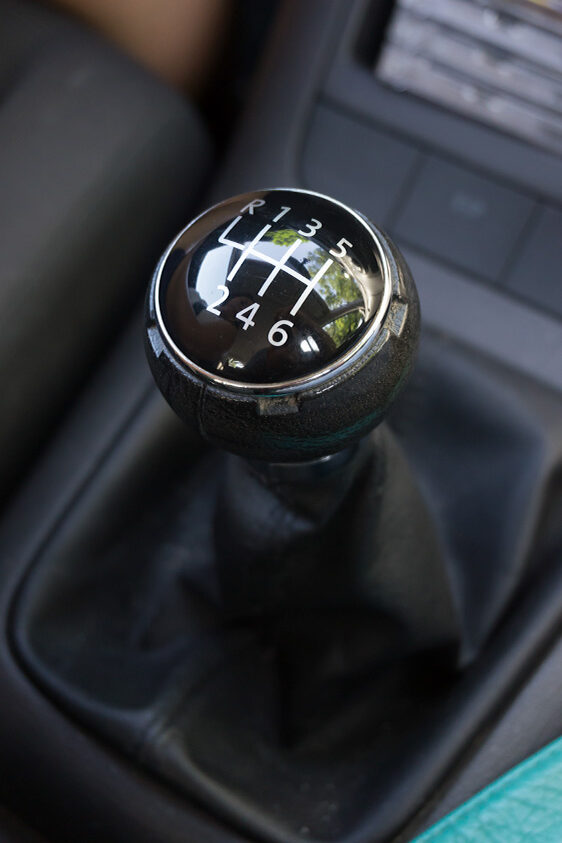The gearbox is the most practical solution because it allows you to switch to the automatic gearbox without the need to repeat the state exam. Unfortunately, otherwise it doesn’t work the same way. Completing the course on an automatic gearbox does not allow you to drive vehicles with a manual. In the following guide, we will focus on the pros and cons of both solutions. We will also try to present the operation of hybrid forms in the form of semi-automatic and dual-clutch gearboxes.

What is a manual gearbox?
Commonly known as manual, manual transmission is one of the cheapest and simplest solutions available in most vehicle models. However, it requires the most attention from drivers, because each gear change must be performed independently while driving. In practice, this is limited to pressing the clutch pedal and manually setting the appropriate gear with the help of a traditional stick. In most cars, it is now located in the central part of the cockpit (on the right side of the driver). In older or larger vehicles (e.g. trucks or vans), the gear lever is most often located in the floor or behind the steering wheel. In both cases, the mechanism of action is exactly the same, the only differences can be in the numbers and the arrangement of the gears.
What are the advantages of a manual gearbox?
The manual gearbox is usually the cheapest possible variant available in European car models. Cars equipped with this solution will have at least a noticeably lower price compared to models with a fully-fledged automatic. Fans of traditional mechanical motorization (i.e. not relying on electronic driver assistance systems) will surely appreciate the greater driving dynamics and the relatively low cost of repairing manual gearboxes. According to many drivers, the manual gearbox is also more economical because, unlike automatic machines, it does not require additional cooling. In addition, it provides greater control over dynamics and acceleration, and allows you to take advantage of the natural engine braking process. This has a direct impact on the longer life of the brake pads and greater efficiency in overcoming difficult terrain.
What is an automatic transmission useful for?
The automatic transmission is a perfect solution for people who value comfort while driving around the city. Manually shifting gears while standing in a traffic jam is not the most pleasant thing to do, but this problem only affects manual transmissions. The machine is characterized by the lack of a clutch pedal and a 4-way adjustment of the movement mode. The following gears are available for the driver in traditional 6-speed manual transmissions: 1, 2, 3, 4, 5 and reverse. Most slot machines use a completely different system based on the following modes:
D (Drive) –forward driving mode
R (Reverse) – reverse driving mode
P (Parking) – parking mode
N (Neutral) – neutral mode (resembles leaving the gearbox “in neutral”)
People switching from manual gearboxes to automatic ones are also very often surprised that after shifting the D gear, the car starts to gently move forward despite the lack of any pressure on the gas pedal. It is worth paying attention to this, especially when parking and starting a drive, because it will avoid the unpleasantness associated with scratching the paint.

Why not all drivers opt for an automatic transmission?
An automatic transmission is a much more expensive solution that unfortunately requires regular service in a professional workshop. In theory, they should be much less susceptible to natural exploitation, but unfortunately this is not the case. In practice, even minor repair or maintenance procedures require access to specialized diagnostic equipment and a dedicated set of tools. This will largely narrow down the number of potential specialists and car repair shops that will undertake repairs. Replacing individual elements usually requires the entire box to be broken down into prime factors, which obviously translates into higher costs. Consumable parts for automatic transmissions are not the cheapest components, but this is not their only disadvantage. This solution is usually characterized by a noticeably weaker acceleration, which translates into worse steering and lower driving dynamics. Of course, in modern models, this effect is almost imperceptible, but in older and used cars with a long history, the differences are colossal.
How does the dual clutch gearbox work?
The dual-clutch gearbox is a combination of an automatic and a mechanical gearbox, which became popular under the name DSG (Direct Shift Gearbox) thanks to the German Volkswagen concern. This type of gearbox, thanks to the presence of two clutches (for even and odd gears), can operate in automatic or manual mode. The methodology of this system is based on gear preselection, which are automatically prepared for a smooth shifting.
What is a semi-automatic gearbox?
The semi-automatic gearbox (also called sequential) is a very interesting alternative that combines the greatest advantages of manual and automatic transmissions. Such solutions relieve the driver of the need to press the clutch, but leave room for manual gear changes. Sequential gearboxes work best in sports car models, which are equipped with characteristic gearshift paddles instead of a stick.





